Every MLB Team's Largest Free-Agent Contract in Franchise History
Every MLB Team's Largest Free-Agent Contract in Franchise History
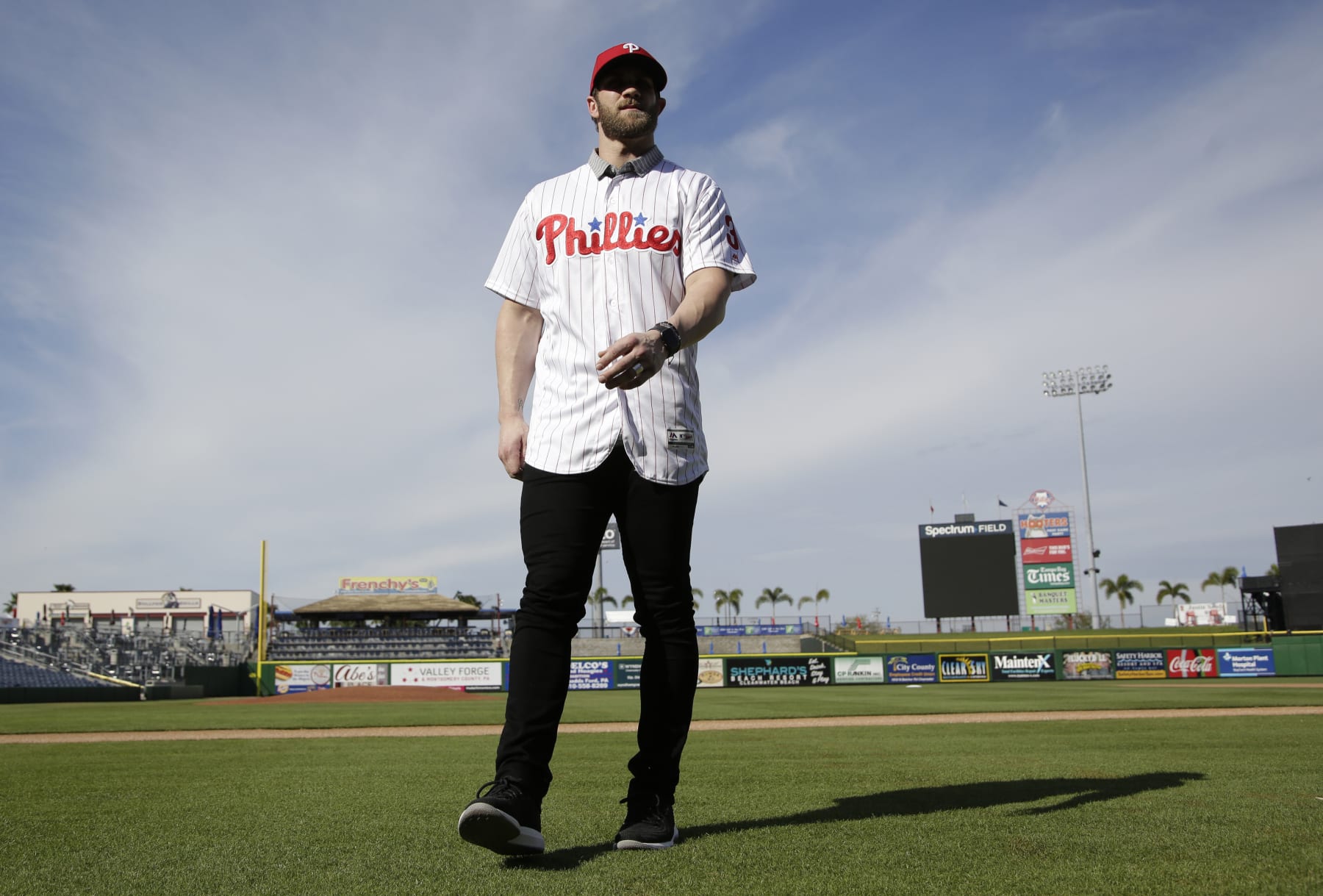
With billions of dollars being thrown around on Major League Baseball's free-agent market, it's a good time to reminisce about the biggest contracts in each team's history.
So, that's what we've done—with a twist!
We could have sifted through all 30 teams' free-agent signing histories—records of which dating as far back as 1991 are well-kept by Cot's Baseball Contracts—in search of the highest guarantees, but that would have A) been boring and B) required making a faulty assumption that dollars from years past are worth the same as dollars in 2022.
Since that's not the case, we dared to adjust for inflation.
We opted for the simple path of using the consumer price index and a standard adjustment calculation to gauge how much the value of deals has inflated since the season in which they began. For obvious reasons, we left pacts signed this winter alone. Here are the full results.
We didn't limit ourselves to one selection for each club if the results were close. We otherwise carried out our analysis by asking two simple questions about each signing:
- Was it a good idea?
- Did it work out?
We'll hand out honorable mentions in cases where a team's highest unmanipulated guarantee is different from its highest inflation-adjusted guarantee.
Arizona Diamondbacks: Zack Greinke
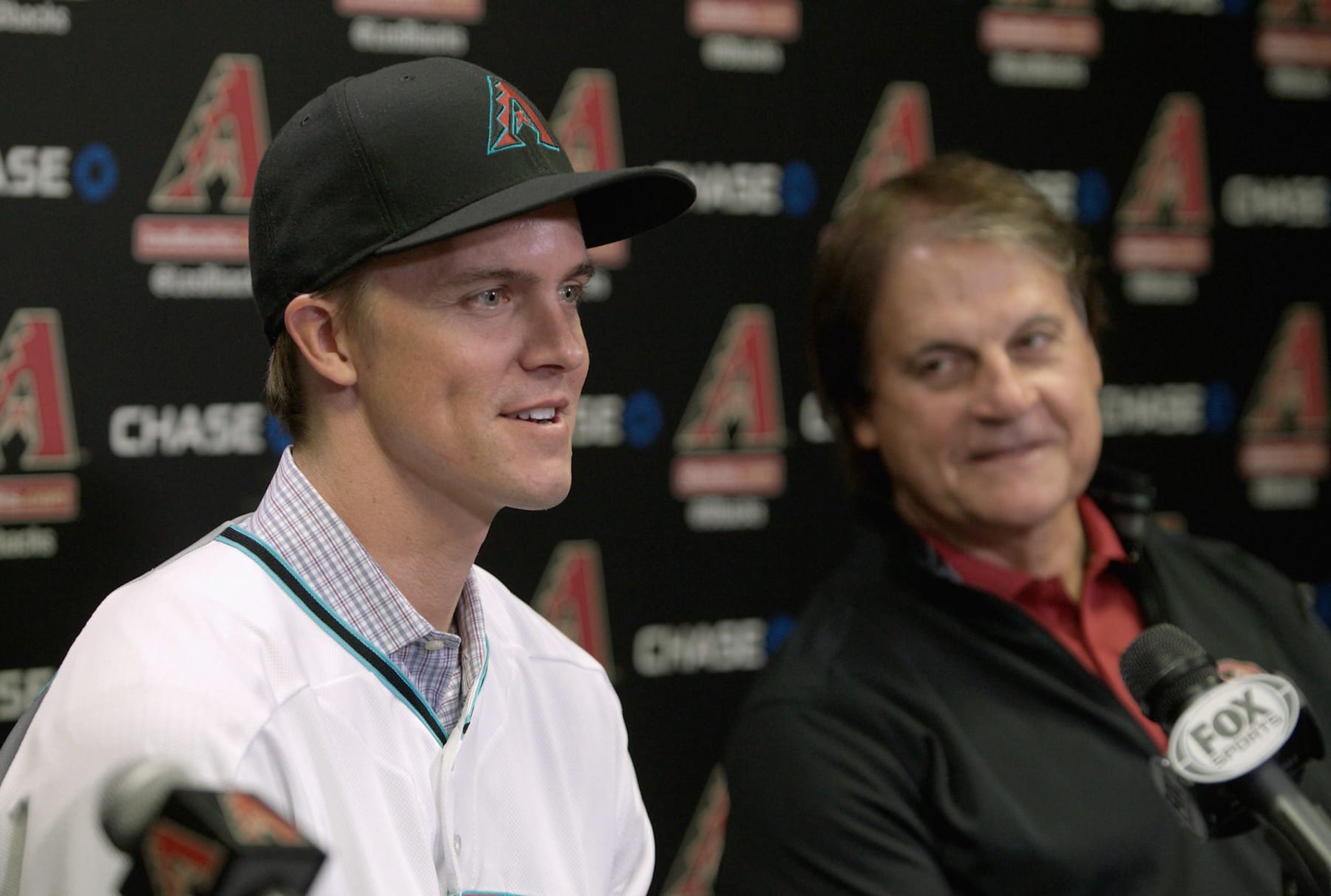
Signing Year: 2015
The Terms: 6 Years, $206.5 Million
In 2022 Dollars: $253.3 Million
Was It a Good Idea?
This wasn't so much a bad idea as the wrong team taking too big of a risk.
As he won the American League Cy Young Award in 2009 and was fresh off posting a Maddux-ian 1.66 ERA in 2015, Zack Greinke headed the desert with ace bona fides. But the Diamondbacks could only spend so much to flesh out the rest of their roster, hence how he accounted for 35 percent of their payroll in 2016.
Did It Work Out?
Not to the degree that the Diamondbacks hoped.
Greinke was mostly very good in pitching to a 131 ERA+ in the three-plus seasons he spent with the Snakes. But apart from a lone playoff run in 2017, the team struggled to make the most of his presence before it cut its losses and traded him to the Houston Astros in 2019.
Atlanta: B.J. Upton
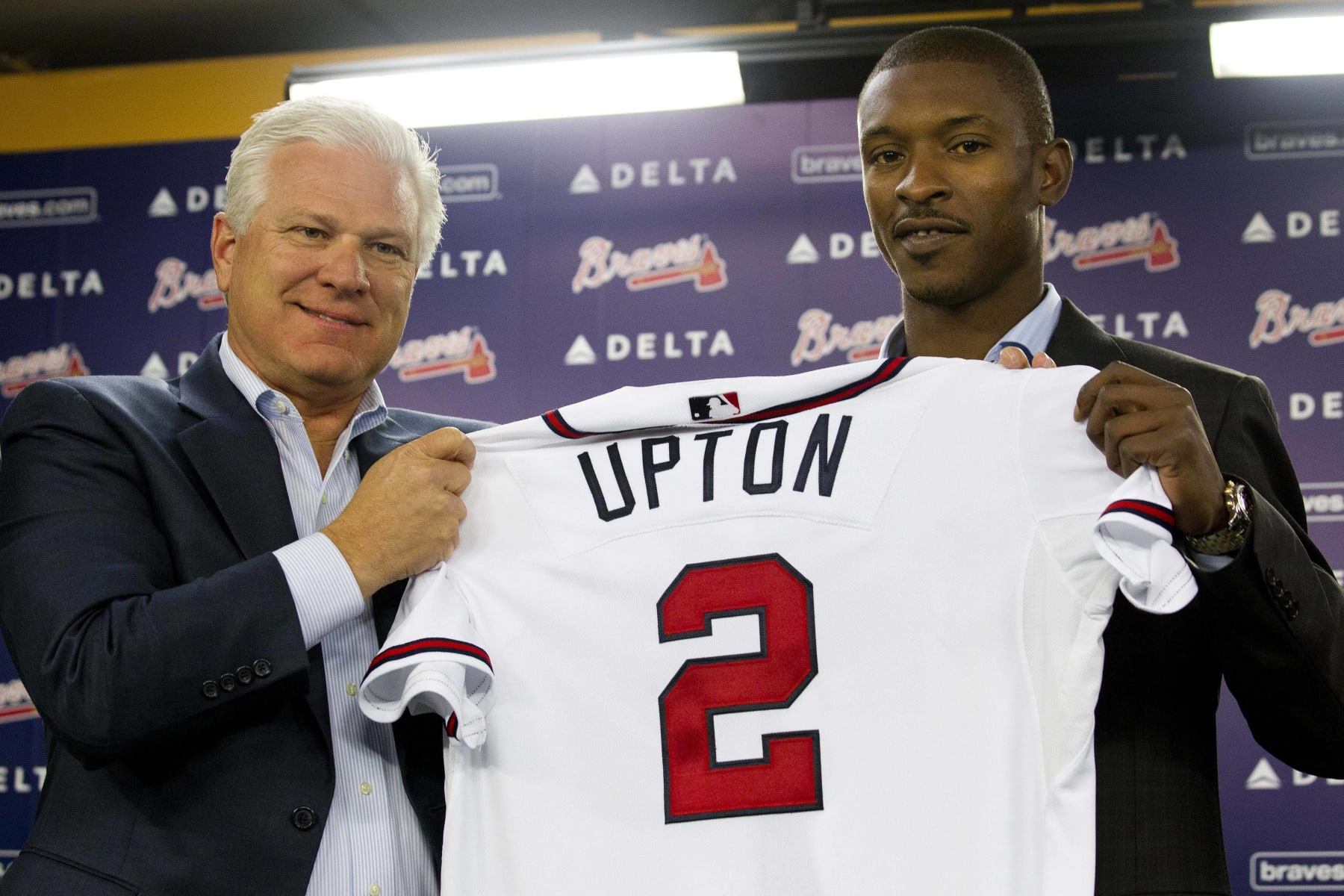
Signing Year: 2012
The Terms: 5 Years, $75.25 Million
In 2022 Dollars: $95.1 Million
Was It a Good Idea?
Heavens, no.
B.J. Upton had his moments with the Tampa Bay Rays—never more so than during his legendary eight-game run during the 2008 playoffs—but his production got increasingly volatile toward the end of it. He posted just a .316 OBP from 2009 to 2012, culminating in an ugly .298 OBP in '12 that should have scared Atlanta more than it did.
Did It Work Out?
Once again: Heavens, no.
Rather than revert to what he had been in his best days with the Rays, Upton didn't do much of anything as he posted a 66 OPS+ and minus-1.7 rWAR across 2013 and 2014. After that, Atlanta's only way out was to package him with Craig Kimbrel in a trade to the San Diego Padres that quickened an ongoing rebuild.
Baltimore Orioles: Chris Davis
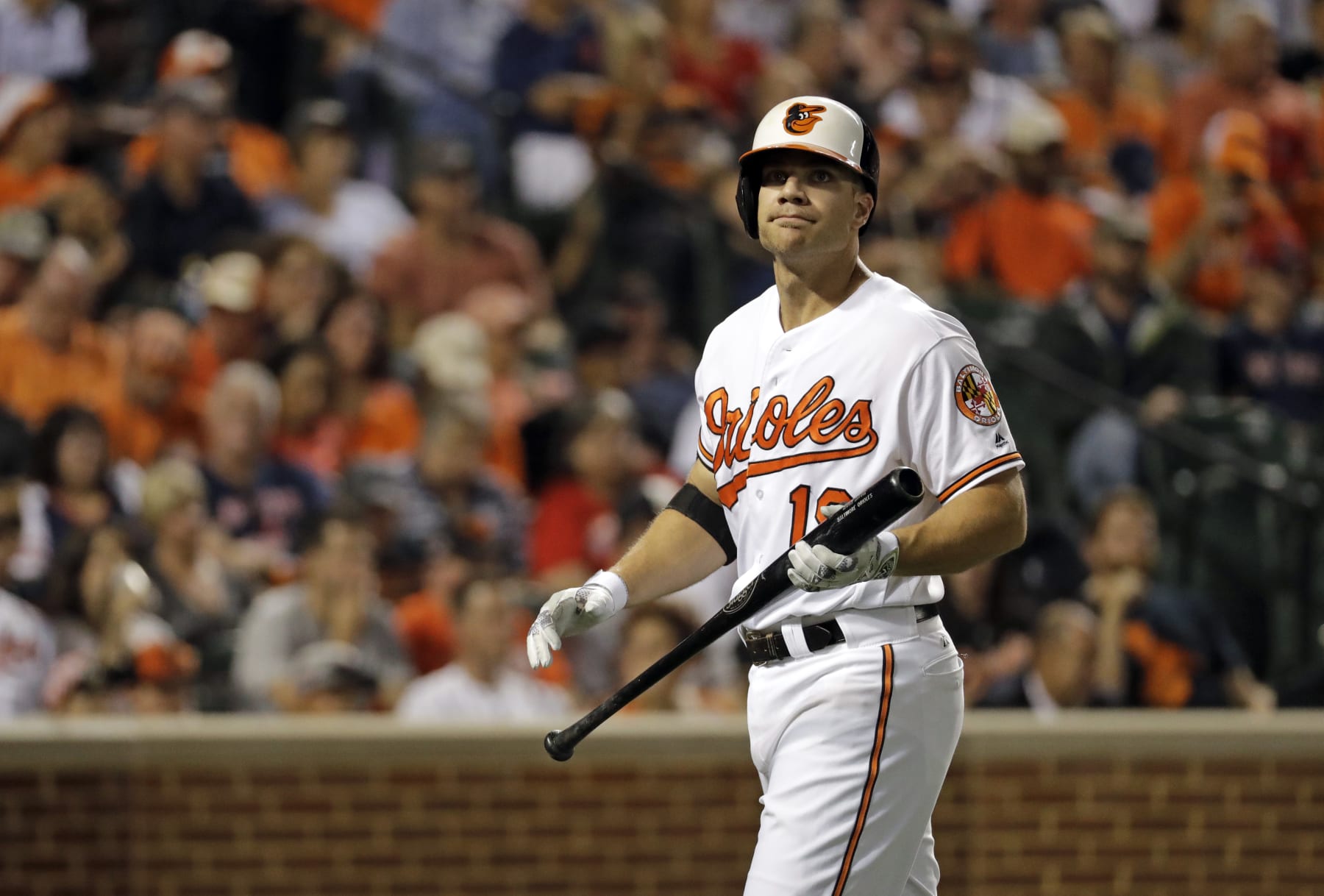
Signing Year: 2016
The Terms: 7 Years, $161 Million
In 2022 Dollars: $197.5 Million
Was It a Good Idea?
Let's just say that context matters.
Chris Davis was an important part of some darn good Orioles teams in the mid-2010s, notably leading the majors in home runs in 2013 and again in his walk year in 2015. It's tough to let a guy like that get away, much less at a time when nobody knew whether the dramatic increase in home runs in the second half of '15 would stick.
Did It Work Out?
Context, schmontext.
Though Davis did put forth a 38-homer season in 2016, after that his skill set rapidly devolved from power-only to nothing-only. He posted a 66 OPS+ and minus-5.8 rWAR from 2017 to 2020, notably hitting bottom with a 0-for-54 hitless streak that spanned the end of 2018 and the beginning of 2019. He "retired" when the O's bought him out in Aug. 2021.
Boston Red Sox: Manny Ramirez and David Price
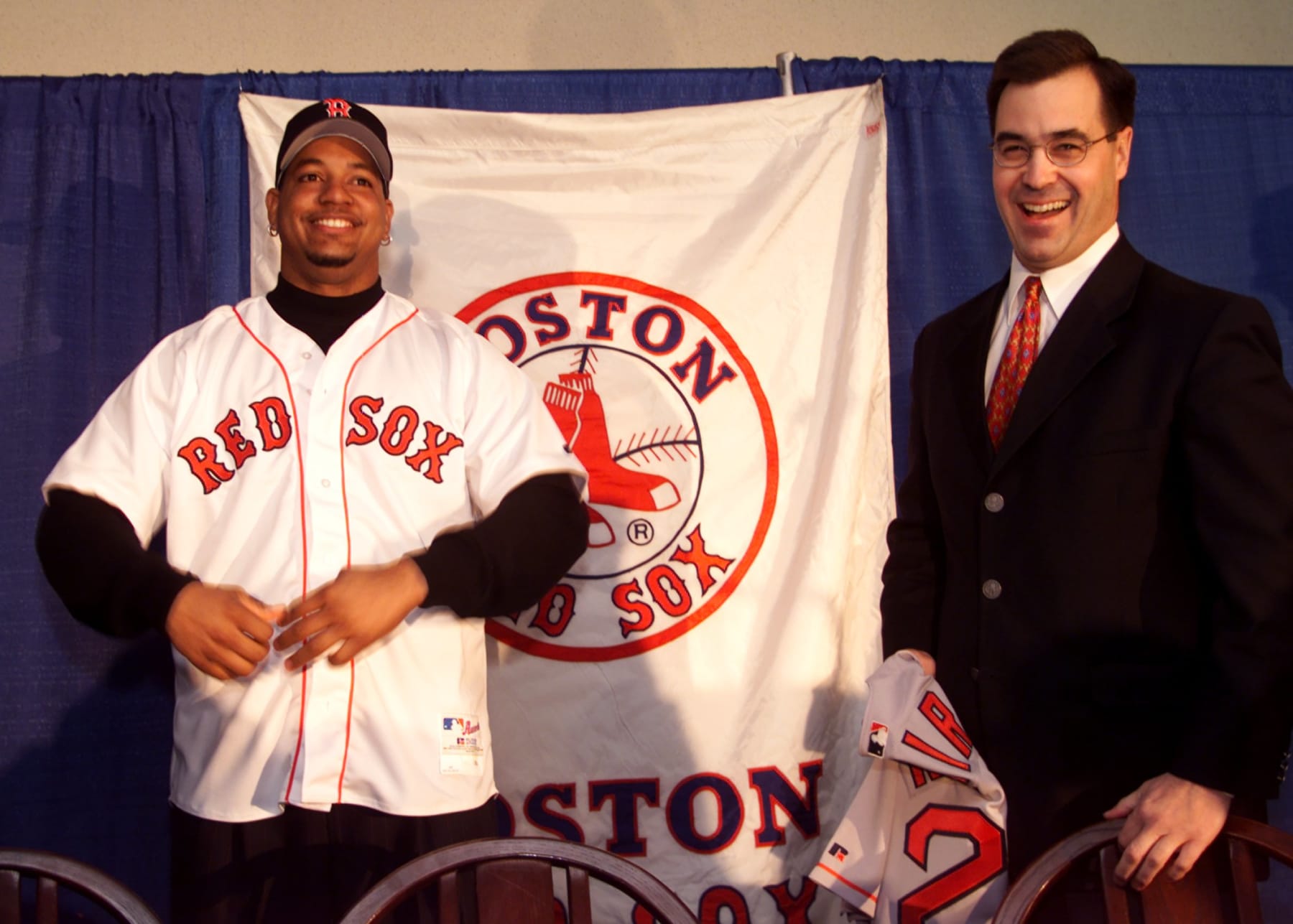
Manny Ramirez's Terms: 8 Years, $160 Million
David Price's Terms: 7 Years, $217 Million
In 2022 Dollars: $266 Million (Ramirez) and $266.2 Million (Price)
Were These Good Ideas?
Absolutely. And that goes for both of them.
When the Red Sox signed Manny Ramirez, they were adding a premier middle-of-the-order hitter to an offense that had ranked 12th out of 14 AL teams in runs for the previous season. When they inked David Price 15 years later, they put a Cy Young Award winner and two-time ERA champion atop a starting rotation that had been decidedly ace-less.
Did They Work Out?
And then some.
Though Ramirez (see here) and Price (here) both courted controversy while in Boston, the Red Sox were the beneficiaries of 274 of Ramirez's 511 home runs and a sturdy 118 ERA+ from Price. Ramirez was also a key part of World Series winners in 2004 and 2007, while Price was a postseason hero during the Red Sox's title run in 2018.
Chicago Cubs: Jason Heyward
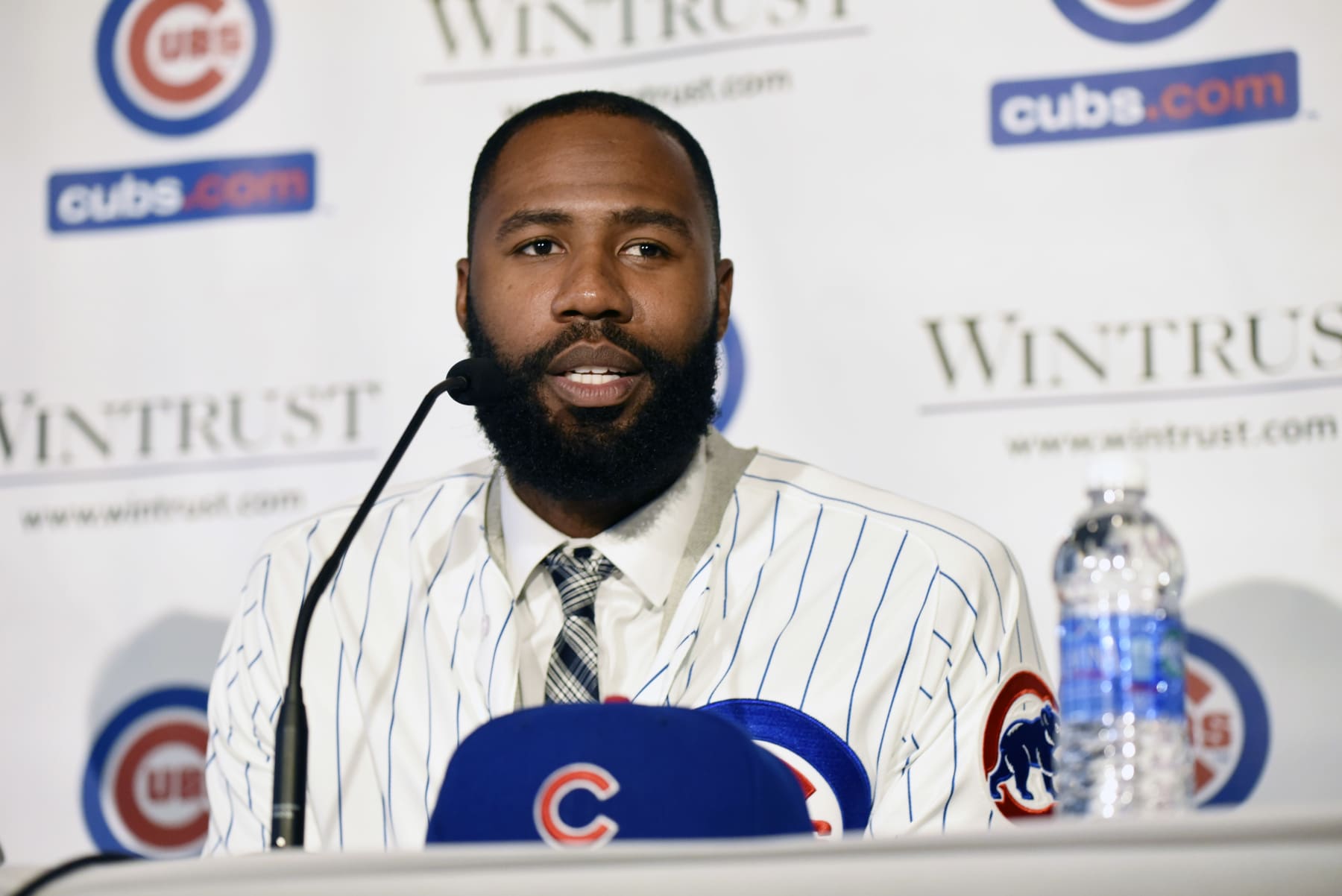
Signing Year: 2015
The Terms: 8 Years, $184 Million
In 2022 Dollars: $225.7 Million
Was It a Good Idea?
This might come off as a hot take, but yes.
He wasn't the most consistent hitter under this or any other sun, but Jason Heyward's assortment of skills made him one of the game's five-most valuable outfielders from 2010 to 2015. He was also only coming off his age-25 season, so there was every reason to believe he'd be a key part of a Cubs franchise that was on the rise after a 97-win season.
Did It Work Out?
Alas, no.
Heyward's defining moment as a Cub will always be the speech he gave to rally the troops during a rain delay in Game 7 of the 2016 World Series, which the Cubs won to snap their 108-year championship drought. Still, even a moment as epic as that only does so much to distract from an average of 1.3 rWAR across seven seasons.
Chicago White Sox: Albert Belle
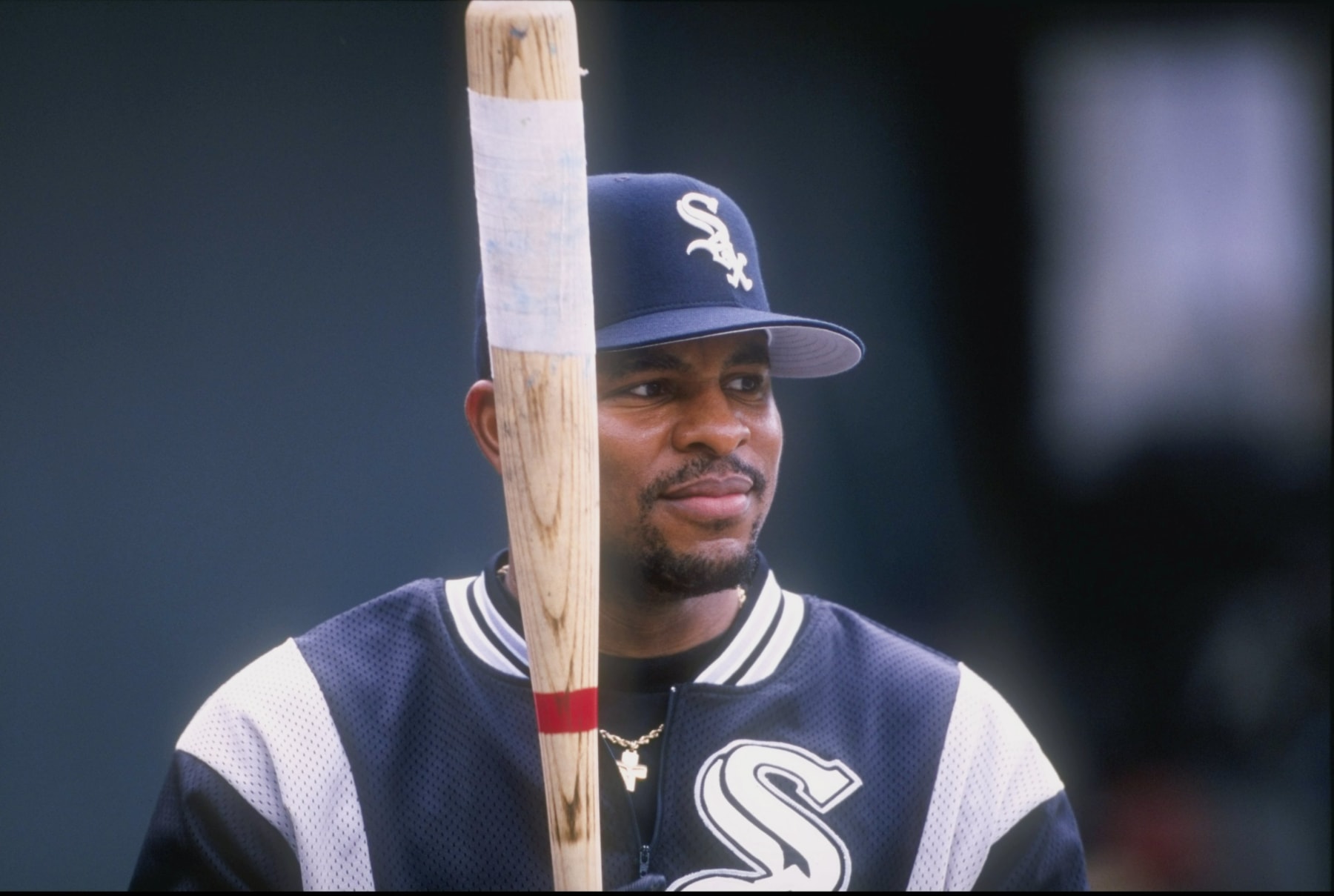
Signing Year: 1996
The Terms: 5 Years, $55 Million
In 2022 Dollars: $100.9 Million
Honorable Mention: Andrew Benintendi's 5-Year, $75 Million Deal from 2022
Was It a Good Idea?
It was the middle of the 1990s, so obviously yes.
Albert Belle had finished no lower than third in the AL MVP voting from 1994 to 1996, averaging 53 home runs per 162 games. Even incumbent White Sox slugger Frank Thomas agreed that Belle "should be the highest-paid player" in MLB, though his salary paled in comparison to the highest one on Chicago owner Jerry Reinsdorf's NBA team.
Did It Work Out?
Kinda. Sorta. Not really.
Belle did redeem a subpar 1997 season with a return to form in 1998, wherein he cranked 49 homers and drove home 152 runs. But after that, a clause in his contract allowed him to pursue other options if he was no longer one of the game's three highest-paid players. That's how he ended up in Baltimore on a $65 million deal that was undone by an arthritic hip.
Cincinnati Reds: Nick Castellanos and Mike Moustakas
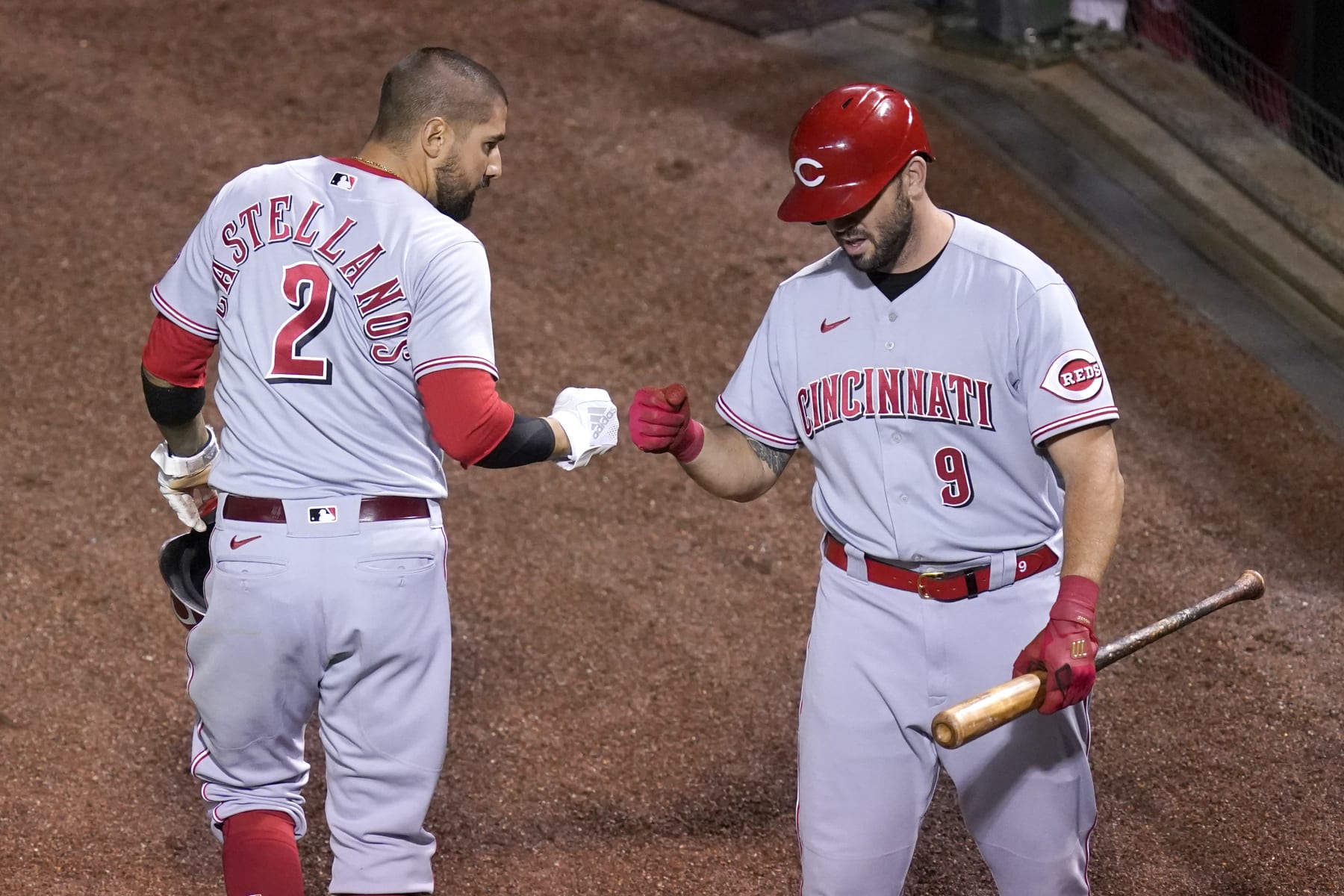
Both Players' Terms: 4 Years, $64 Million
In 2022 Dollars: $72.8 Million
Were These Good Ideas?
The logic was sound, anyway.
The Reds had only won 75 games in 2019, but the presence of 49-homer slugger Eugenio Suárez, OBP machine Joey Votto and aces Sonny Gray and Luis Castillo gave them a solid foundation to build on. Enter Mike Moustakas and Nick Castellanos, who promised to lengthen the lineup after hitting a combined 62 home runs for other teams that year.
Did They Work Out?
Castellanos, yes. Moustakas, no.
Castellanos was mostly productive in two seasons with Cincinnati, especially as he posted a 138 OPS+ and 34 home runs in 2021. He thus had every reason to opt out. Moustakas, on the other hand, has mostly been neither seen nor heard in Cincinnati. In three years, he's played in 184 of 384 possible games and hit only 21 home runs.
Cleveland Guardians: Edwin Encarnación

Signing Year: 2016
The Terms: 3 Years, $60 Million
In 2022 Dollars: $72.1 Million
Was It a Good Idea?
Right player. Right time. Right place.
The Guardians had narrowly missed winning their first World Series since 1948 in 2016, and that winter saw them stand to lose Mike Napoli and his team-high-tying 34 home runs to free agency. Yet they effectively upgraded in pivoting to Edwin Encarnación, who had hit the second-most home runs of anyone across the previous five seasons.
Did It Work Out?
For the most part, yes.
Encarnación only ended up spending two seasons with Cleveland before it traded him to the Seattle Mariners in Dec. 2018. But he slammed 70 home runs in those two seasons, including five during the team's epic 22-game win streak in 2017. It's too bad he was also a no-show in going 1-for-17 in the playoffs that year and in 2018.
Colorado Rockies: Mike Hampton
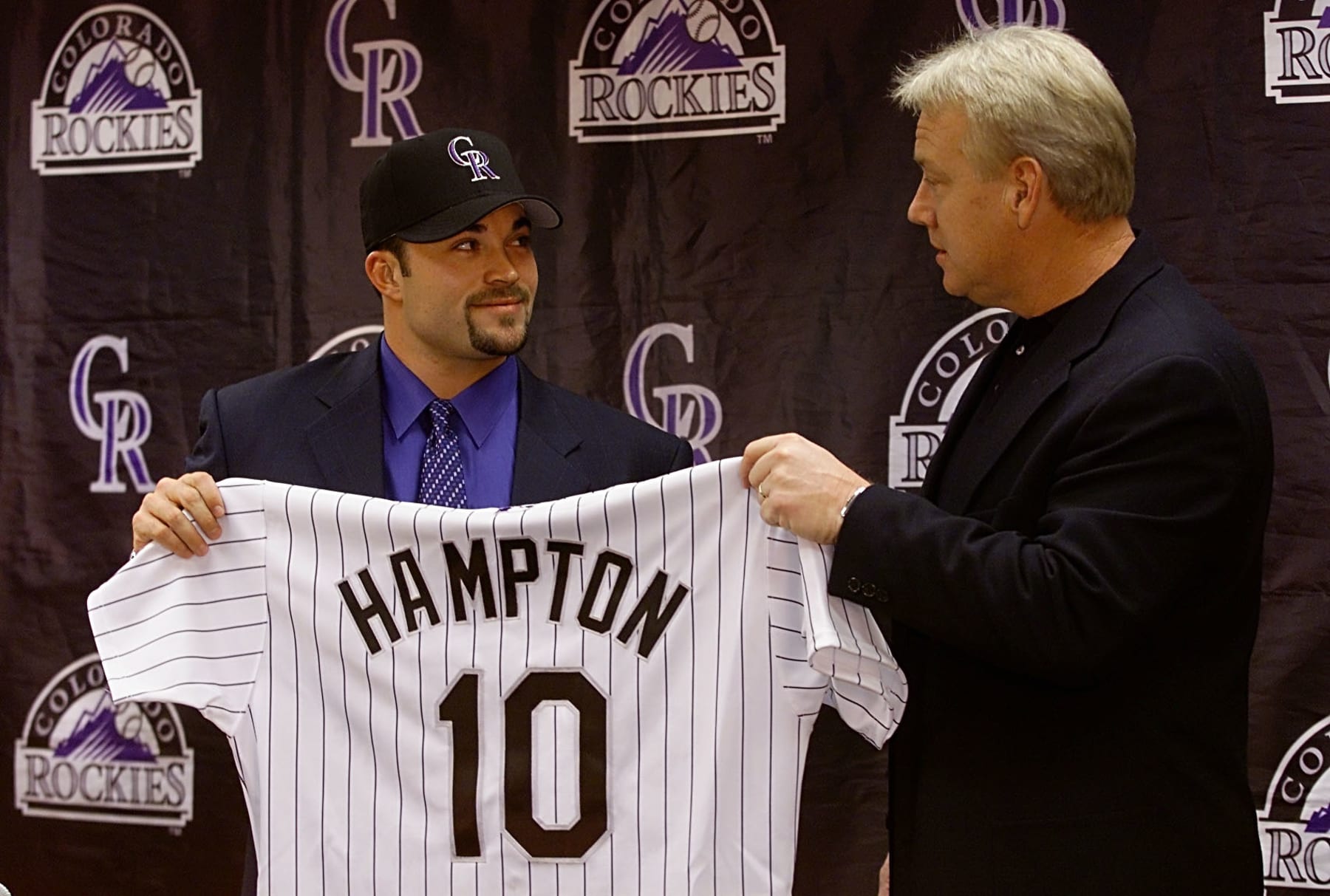
Signing Year: 2000
The Terms: 8 Years, $121 Million
In 2022 Dollars: $201.1 Million
Honorable Mention: Kris Bryant's 7-Year, $182 Million Deal from 2022
Was It a Good Idea?
It was specious, at best.
Mike Hampton indeed went on some kind of run from 1997 to 2000, employing one of the game's best sinkers to rack up a 129 ERA+ and an average of 223 innings per year. But while the Rockies and Hampton himself believed his stuff would play even at Coors Field, basically everyone else was skeptical.
Did It Work Out?
If you prefer to focus on the seven home runs that Hampton hit as a batter in 2001, then yes.
Otherwise, no. The lefty was only good for an 88 ERA+ as a pitcher in '01 and 2002, after which the Rockies traded him and most of his remaining money to Atlanta. The Rockies didn't stop paying him until 2018, the same year they channeled $106 million into a bullpen experiment that would likewise prove to be a disaster.
Detroit Tigers: Prince Fielder
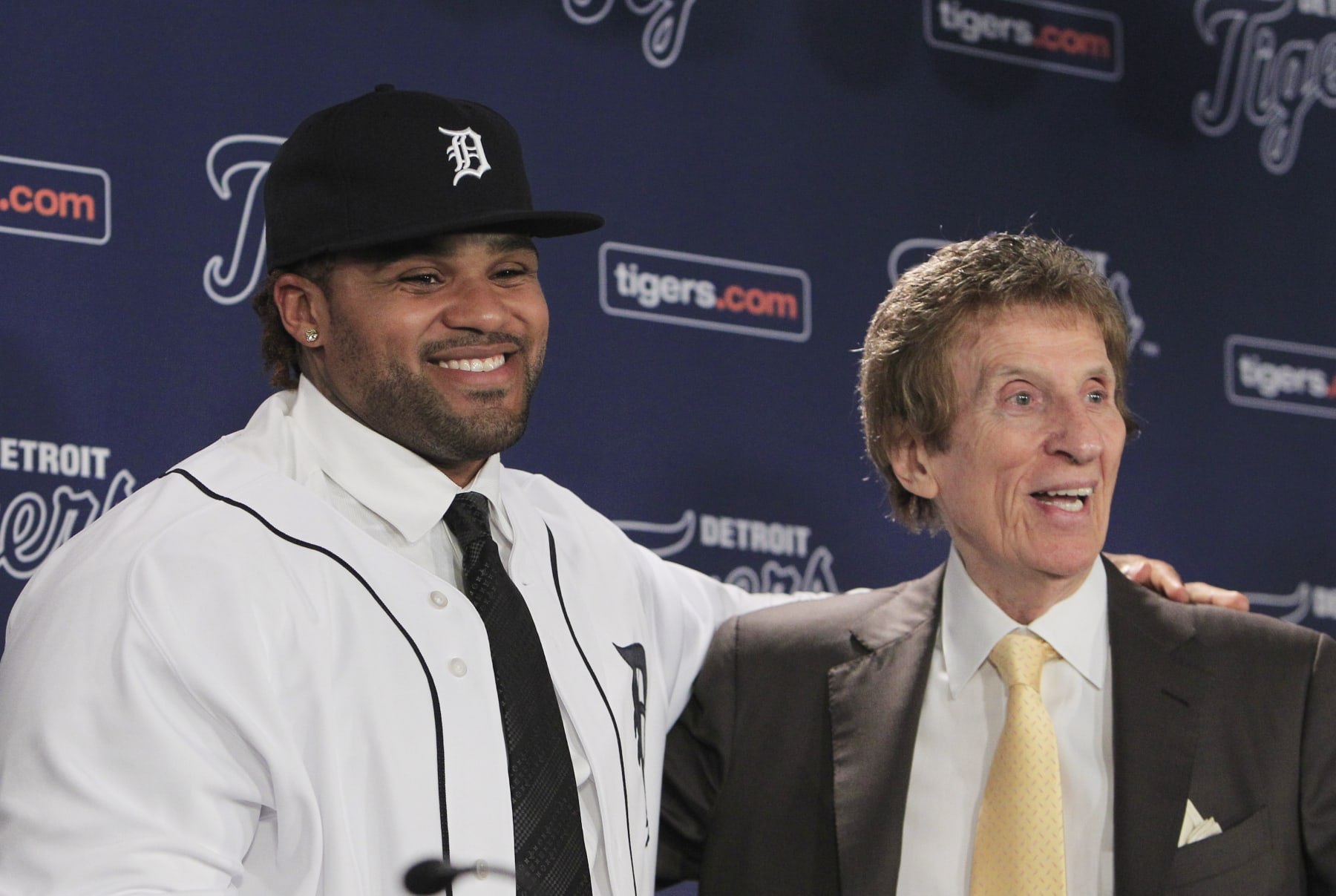
Signing Year: 2012
The Terms: 9 Years, $214 Million
In 2022 Dollars: $266.2 Million
Was It a Good Idea?
Let's settle for calling it a happy accident.
The Tigers went into the 2011-12 offseason with no need of another slugger to go with Miguel Cabrera and Victor Martinez, but that changed when the latter tore his ACL while training for the upcoming year. Filling that hole with Prince Fielder, who had averaged 40 home runs across the previous five seasons, was the opposite of a half-measure.
Did It Work Out?
It did, though not in the way the Tigers anticipated.
Fielder was mostly fine in putting up a 136 OPS+ in 2012 and 2013, but the 55 total home runs he hit were merely the most obvious sign that his power was slipping. The Tigers had the right idea to dodge the bullet before it really struck, flipping him to the Texas Rangers for Ian Kinsler in a bad-contract swap that worked out a lot better for Detroit.
Houston Astros: Carlos Lee
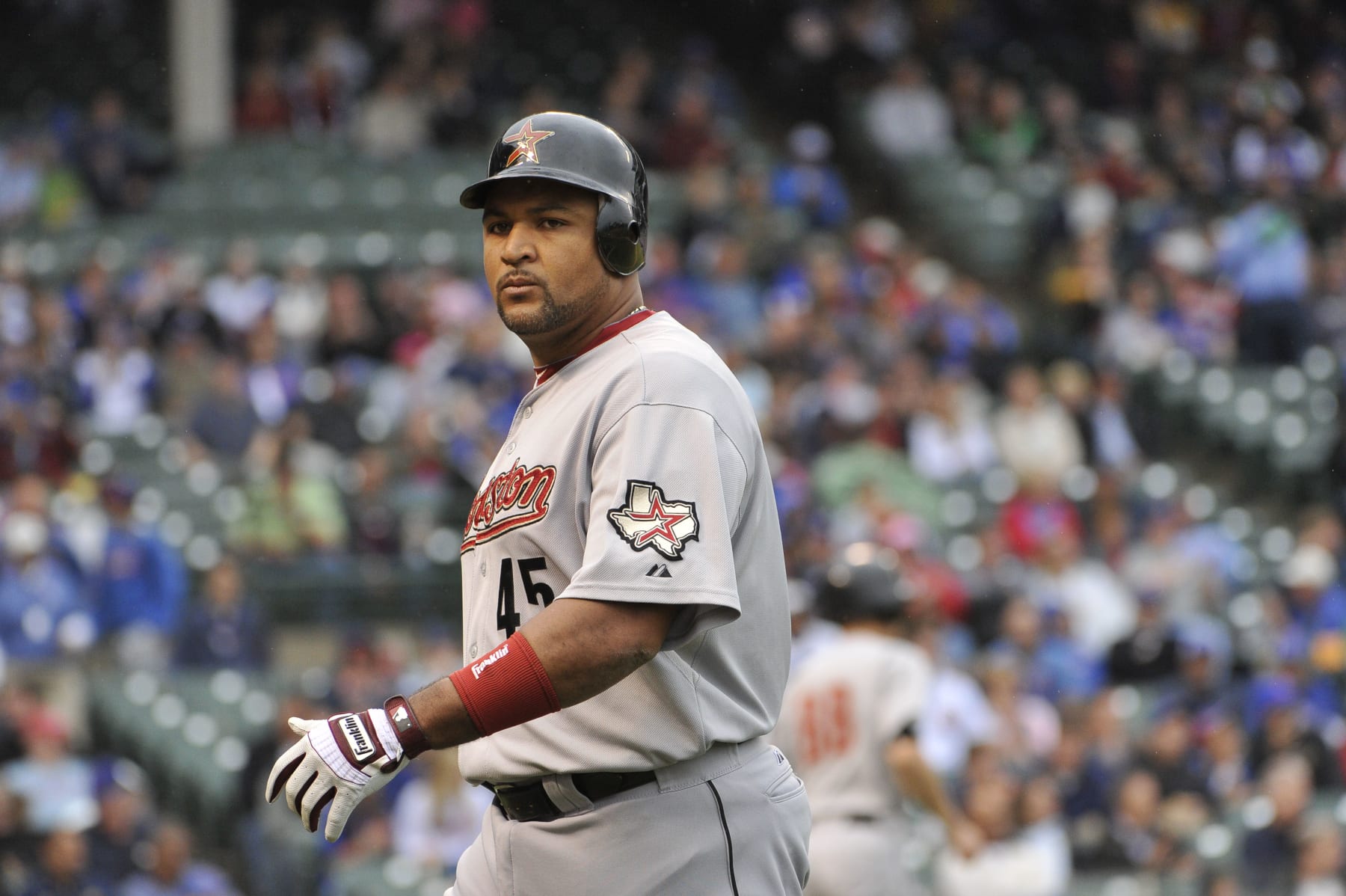
Signing Year: 2006
The Terms: 6 Years, $100 Million
In 2022 Dollars: $142 Million
Was It a Good Idea?
Not really.
Nothing against Carlos Lee. He was one of the league's better hitters from 2002 to 2006, averaging 31 home runs and twice batting at least .300. Yet signing him was a blatant Hail Mary by an Astros franchise that was fresh off winning only 82 games, with Jeff Bagwell already retired and Craig Biggio nearing the end of his own legendary career.
Did It Work Out?
Predictably, it did not.
Lee's debut season in Houston proved to be his only 30-homer effort as an Astro, while the team itself invariably slipped into irrelevance in the late 2000s. By the time they shipped Lee to the Miami Marlins in July 2012, the Astros were mired in what would be the second of three straight 100-loss seasons.
Kansas City Royals: Alex Gordon
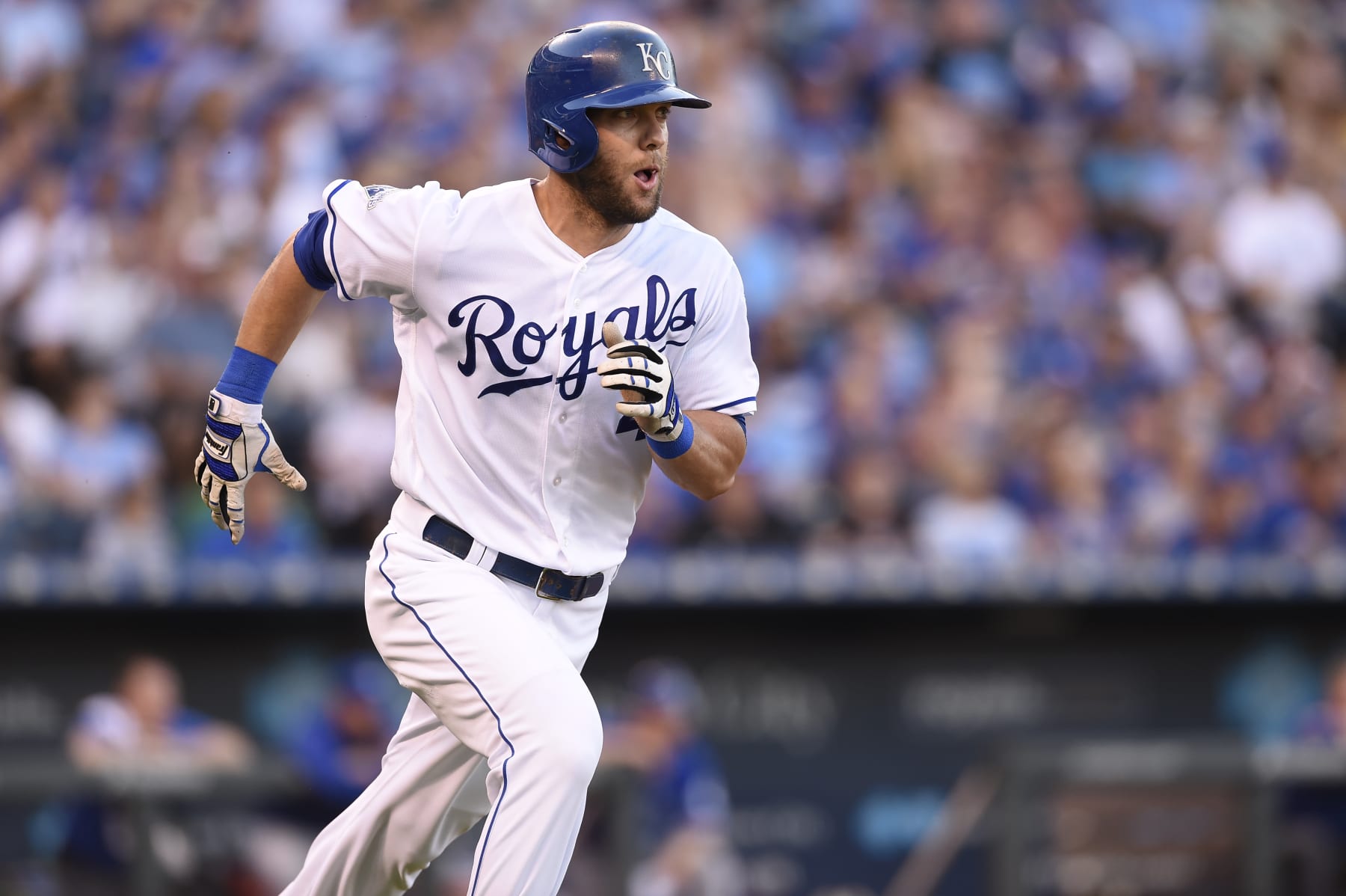
Signing Year: 2016
The Terms: 4 Years, $72 Million
In 2022 Dollars: $88.3 Million
Was It a Good Idea?
No, but there's also no way the Royals were going to let Alex Gordon get away.
Their rise as champions in the mid-2010s simply would not have happened without him. He was one of the game's most well-rounded stars, using his bat and especially his glove to tally the fourth-most rWAR of any outfielder from 2011 to 2015. He even had the biggest hit of the 2015 World Series, which the Royals of course won.
Did It Work Out?
Not terribly well.
As understandable as it was that the Royals didn't want to let their homegrown star get away, the warning signs had been there as Gordon struggled through injuries and a second-half slump in 2015. That set the tone for a four-year run in which he managed only 3.4 rWAR, by the end of which the Royals had devolved into 100-game losers in 2018 and 2019.
Los Angeles Angels: Albert Pujols

Signing Year: 2011
The Terms: 10 Years, $240 Million
In 2022 Dollars: $307.7 Million
Honorable Mention: Anthony Rendon's 7-Year, $245 Million Deal from 2019
Was It a Good Idea?
It was a risk, to say the least.
Yes, Albert Pujols entered free agency as a three-time MVP, two-time World Series champion and surefire future Hall of Famer. But he was also coming off an age-31 season in which he had started to show his age. The early years of his contract would thus be a crucial win-now window, and the Angels weren't ideally equipped for it after an 86-76 season.
Did It Work Out?
Look, we all know the story.
Whereas Pujols had a 170 OPS+ in 12 years with the St. Louis Cardinals, he mustered only a 108 OPS+ in 10 seasons with the Angels. They made the playoffs in exactly one of those and failed to win a single game therewithin. It all led to a regrettable end, as Pujols was released amid no small amount of drama in May 2021.
Los Angeles Dodgers: Kevin Brown and Zack Greinke
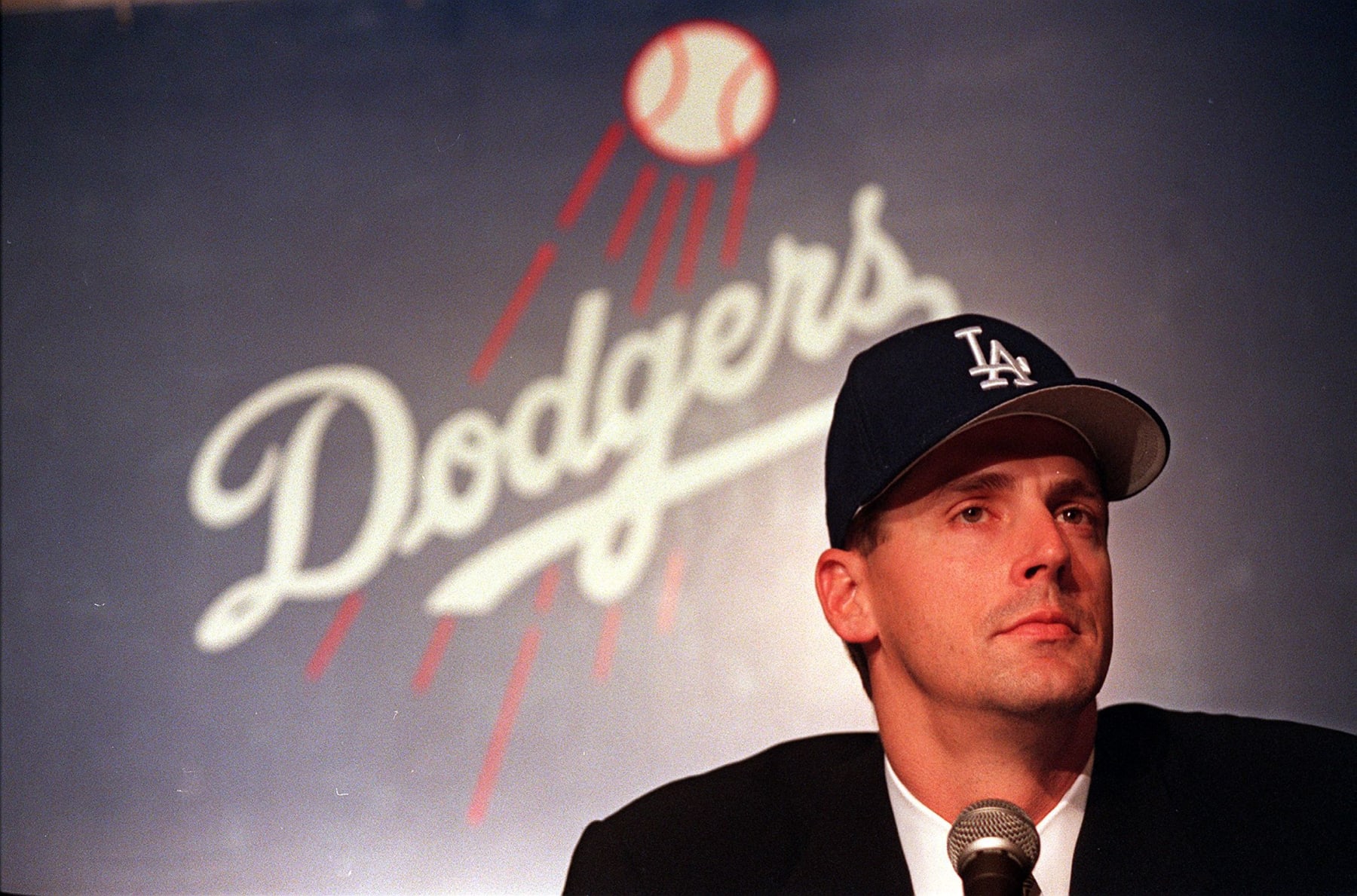
Kevin Brown's Terms: 7 Years, $105 Million
Zack Greinke's Terms: 6 Years, $147 Million
In 2022 Dollars: $185.5 Million (Brown) and $185.7 Million (Greinke)
Honorable Mention: Freddie Freeman's 6-Year, $162 Million Deal from 2022
Were These Good Ideas?
One more than the other.
Both Kevin Brown and Zack Greinke were on excellent runs when the Dodgers signed them. Brown had pitched to a 172 ERA+ from 1996 to 1998, while Greinke claimed the AL Cy Young Award in 2009 amid a five-year run marked by a 124 ERA+. Yet both were on different spots on the aging curve, as Greinke was only 29 while Brown was about to be 34.
Did They Work Out?
As a matter of fact, they did.
Despite some injury troubles in the third and fourth years of his deal, Brown put up an impressive 147 ERA+ in five seasons with the Dodgers before they traded him to the New York Yankees. Greinke, meanwhile, was ace-like to the tune of a 156 ERA+ before opting out to seek greener (figuratively, that is) pastures in Arizona after the 2015 season.
Miami Marlins: José Reyes
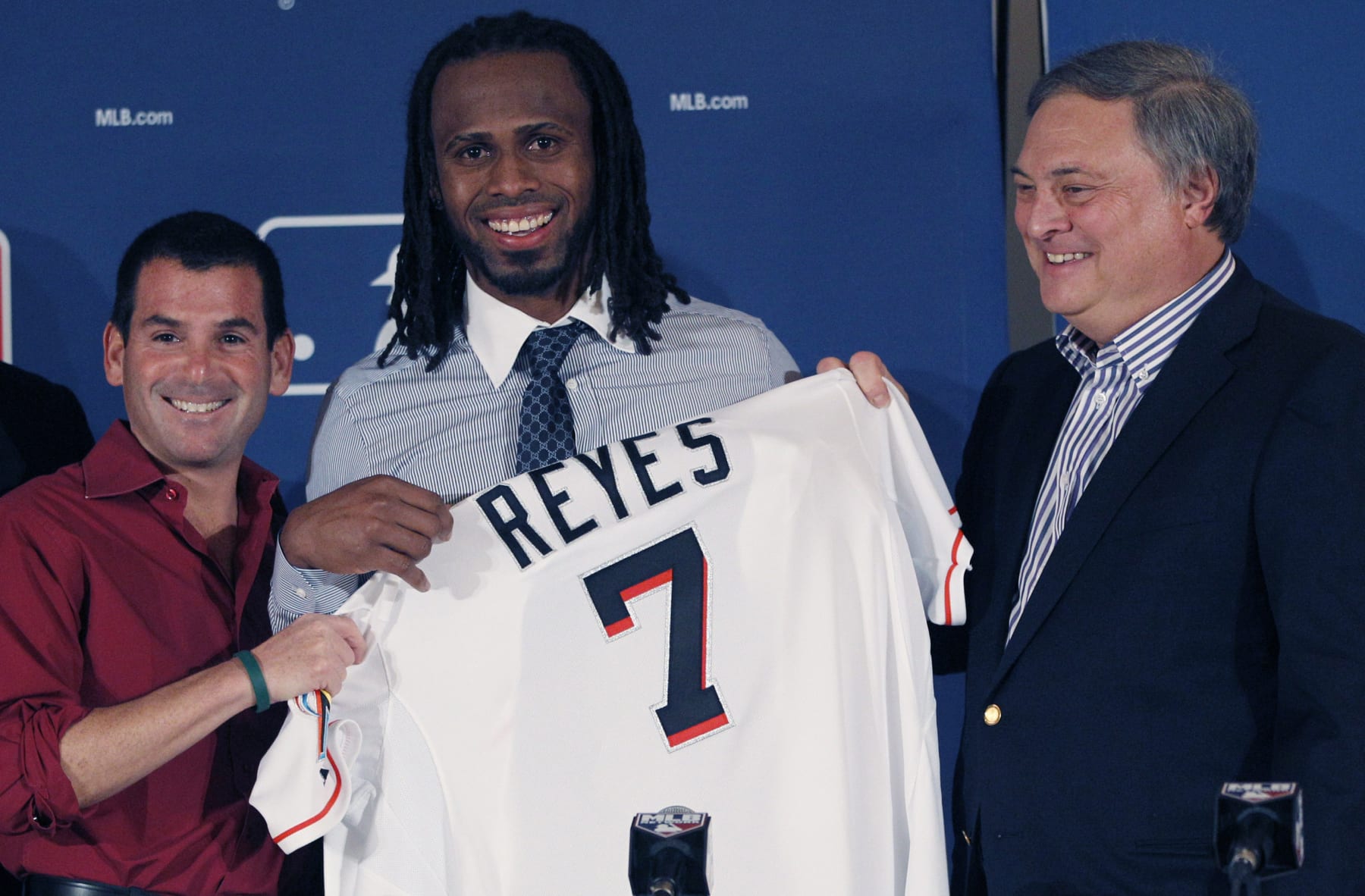
Signing Year: 2011
The Terms: 6 Years, $106 Million
In 2022 Dollars: $135.9 Million
Was It a Good Idea?
Let's call it a good scheme.
The Marlins bought high on José Reyes, signing him when he was fresh off winning the National League batting title with a .337 average in 2011. The $17.7 million average annual value of his contract was more than the team had spent on its entire payroll just five years earlier, but no matter. Surely the team's lavish new ballpark would help pay for it.
Did It Work Out?
Like we said, a good scheme.
Reyes held up his end of the bargain in hitting .287 and stealing 40 bases for the Marlins in 2012, but they began a fire sale before their 93-loss season was even over. Reyes was eventually caught up in it despite a verbal assurance from then-owner Jeffrey Loria that he wouldn't be traded. Remember the lesson, kids: Always get no-trade clauses in writing.
Milwaukee Brewers: Lorenzo Cain

Signing Year: 2018
The Terms: 5 Years, $80 Million
In 2022 Dollars: $93.8 Million
Was It a Good Idea?
Yes, and especially in combination with the move that immediately preceded it.
The Brewers' trade for Christian Yelich and deal with Lorenzo Cain came within hours of each other and instantly provided monumental upgrades for an outfield that had produced only 5.0 rWAR the year before. For his part, Cain brought a solid bat, excellent speed and some of the best outfield defense in the business.
Did It Work Out?
In the beginning, yes. After that, less so.
Cain had arguably the finest year of his career in 2018, tallying 6.9 rWAR for a Brewers squad that won 96 games and fell just one win shy of the World Series. But that was pretty much that for his days as a star. His final four seasons in Milwaukee saw him post just 4.9 rWAR, leading to his unceremonious release this past June.
Minnesota Twins: Carlos Correa
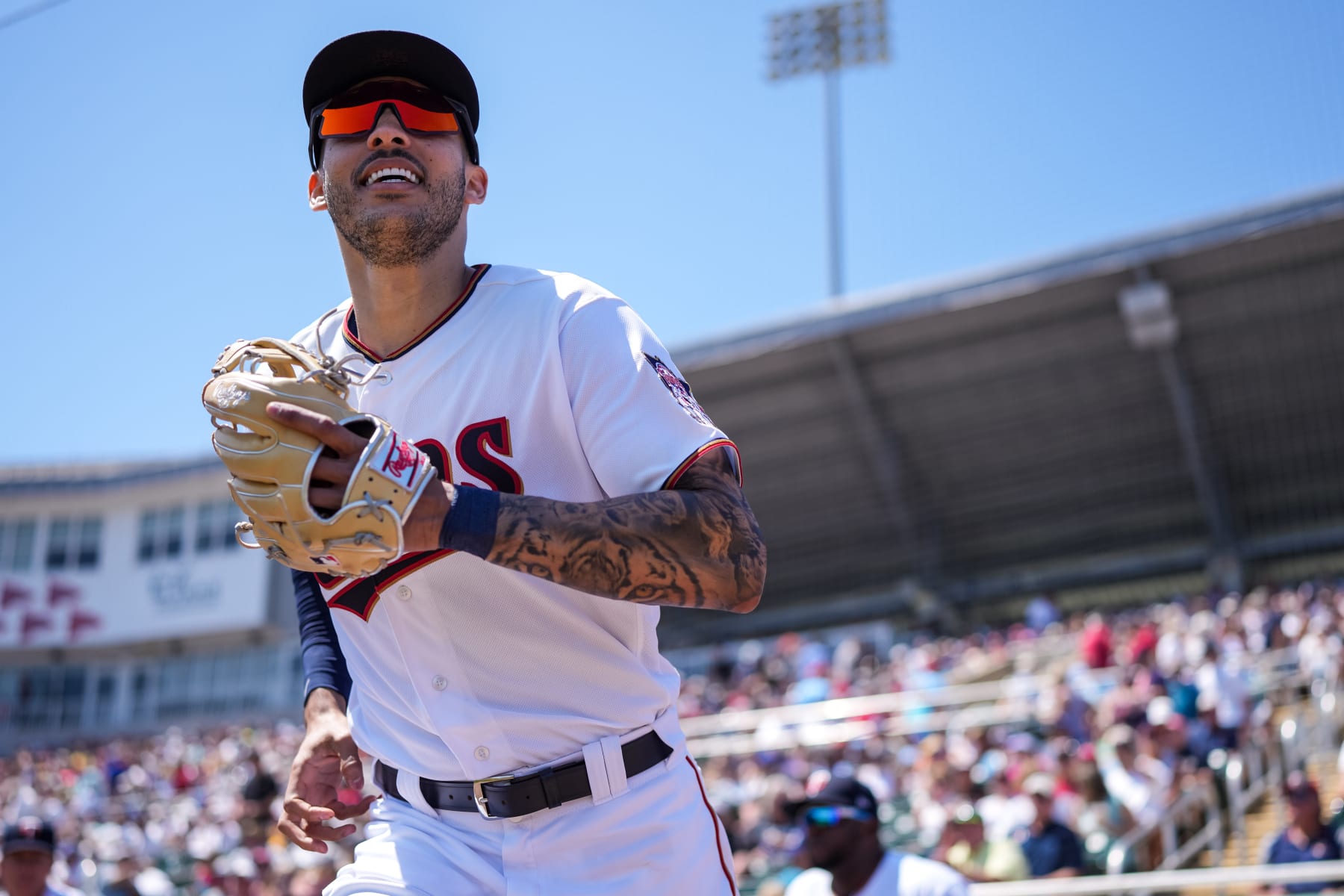
Signing Year: 2022
The Terms: 3 Years, $105.3 Million
In 2022 Dollars: $105.3 Million
Was It a Good Idea?
Not only good, but brilliantly opportunistic.
The Twins were never going to meet the $330-350 million asking price that Carlos Correa had at the outset of the 2021-22 offseason. But once whatever avenues he had to that kind of money closed following the lockout, well, shoot. Why not take an expensive but short-term risk on arguably the best shortstop in the game?
Did It Work Out?
It did, albeit for just one season.
The odds were never good that Correa would play out all three years of his contract, and he gave himself no choice but to opt out after posting a characteristically excellent 5.4 rWAR in 2022. It's nonetheless to his credit that he didn't carry himself like a hired gun even as the Twins endured an 84-loss season. By all accounts, his teammates loved him.
New York Mets: Carlos Beltrán
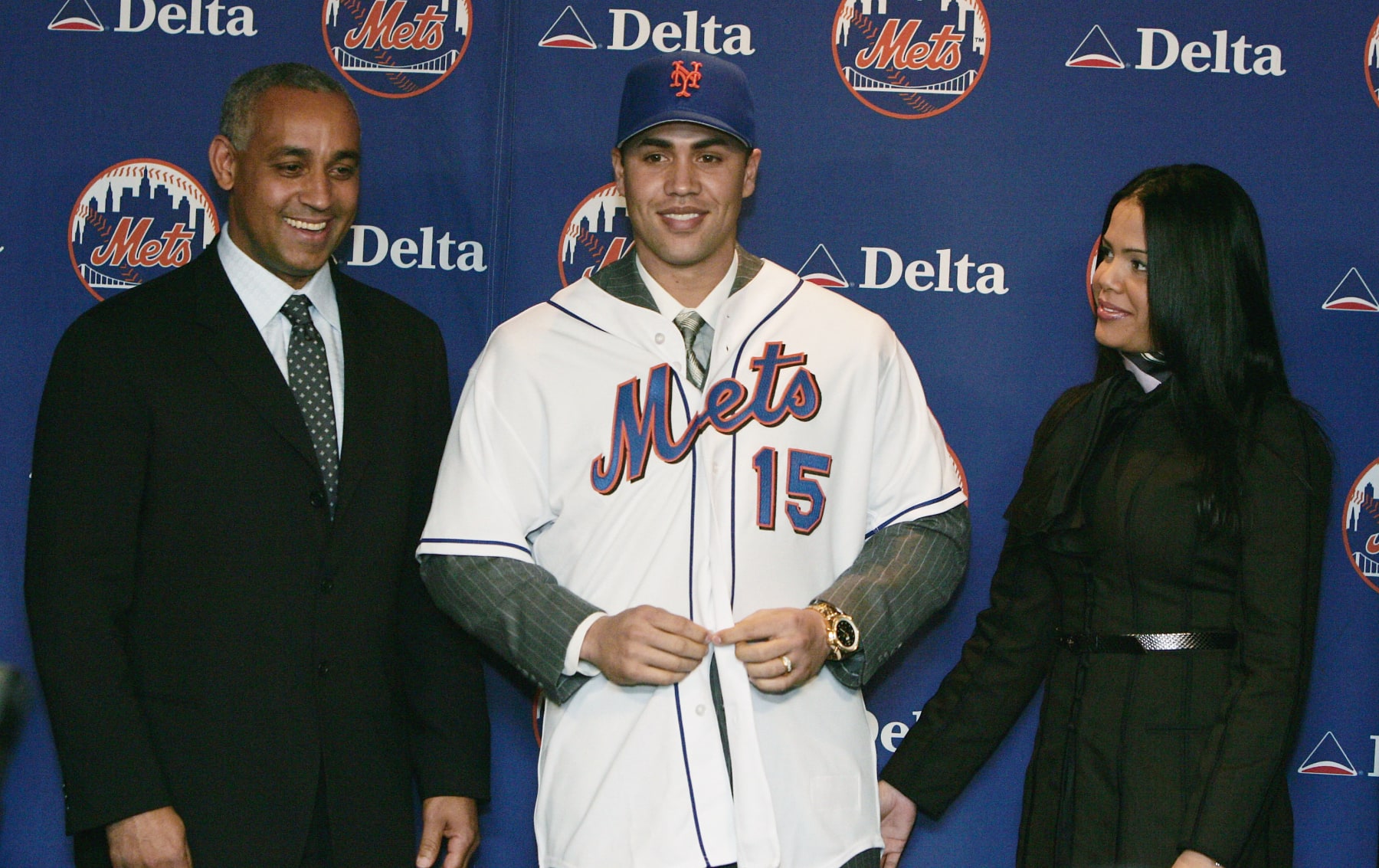
Signing Year: 2005
The Terms: 7 Years, $119 Million
In 2022 Dollars: $170.8 Million
Honorable Mention: Brandon Nimmo's 8-Year, $162 Million Deal from 2022
Was It a Good Idea?
More like a great idea.
The Mets may have been coming off a 91-loss season when they signed Carlos Beltrán, but they had a solid core and his stardom was on an upward trajectory. His 2004 season, especially, was an incredible wire-to-wire effort. After slamming 38 homers and stealing 42 bases in the regular season, he went off for a 1.557 OPS and eight long balls in the playoffs.
Did It Work Out?
Probably more than people remember.
Beltrán didn't make the best first impression in 2005, but he closed the book on his Mets tenure with a 129 OPS+, 149 home runs and 31.1 rWAR. He was even pretty good in his only postseason with them despite, you know, that. Beltrán even served the Mets well on his way out the door, as they traded him for Zack Wheeler in July 2011.
New York Yankees: Alex Rodriguez

Signing Year: 2007
The Terms: 10 Years, $275 Million
In 2022 Dollars: $376 Million
Honorable Mention: Aaron Judge's 9-Year, $360 Million Contract from 2022
Was It a Good Idea?
Despite his accolades up to that point, it was not.
As he was about to win his third MVP award in five seasons, Alex Rodriguez had every reason to opt out of his contract with the Yankees in Oct. 2007. But he was also 32 years old, so signing him for a then-record guarantee over a 10-year period was all but certain to result in the Yankees paying premium prices for A-Rod's decline years.
Did It Work Out?
In retrospect, it could have been worse.
This probably isn't the answer you expected, given that the inevitable arrival of Rodriguez's decline years—he averaged 2.3 rWAR from 2009 to 2016—coincided with his becoming more and more of a headache for the Yankees. But take away his heroics in the 2009 playoffs, and the Yankees' current World Series-appearance drought likely extends back to 2003.
Oakland Athletics: Mark McGwire and Ruben Sierra
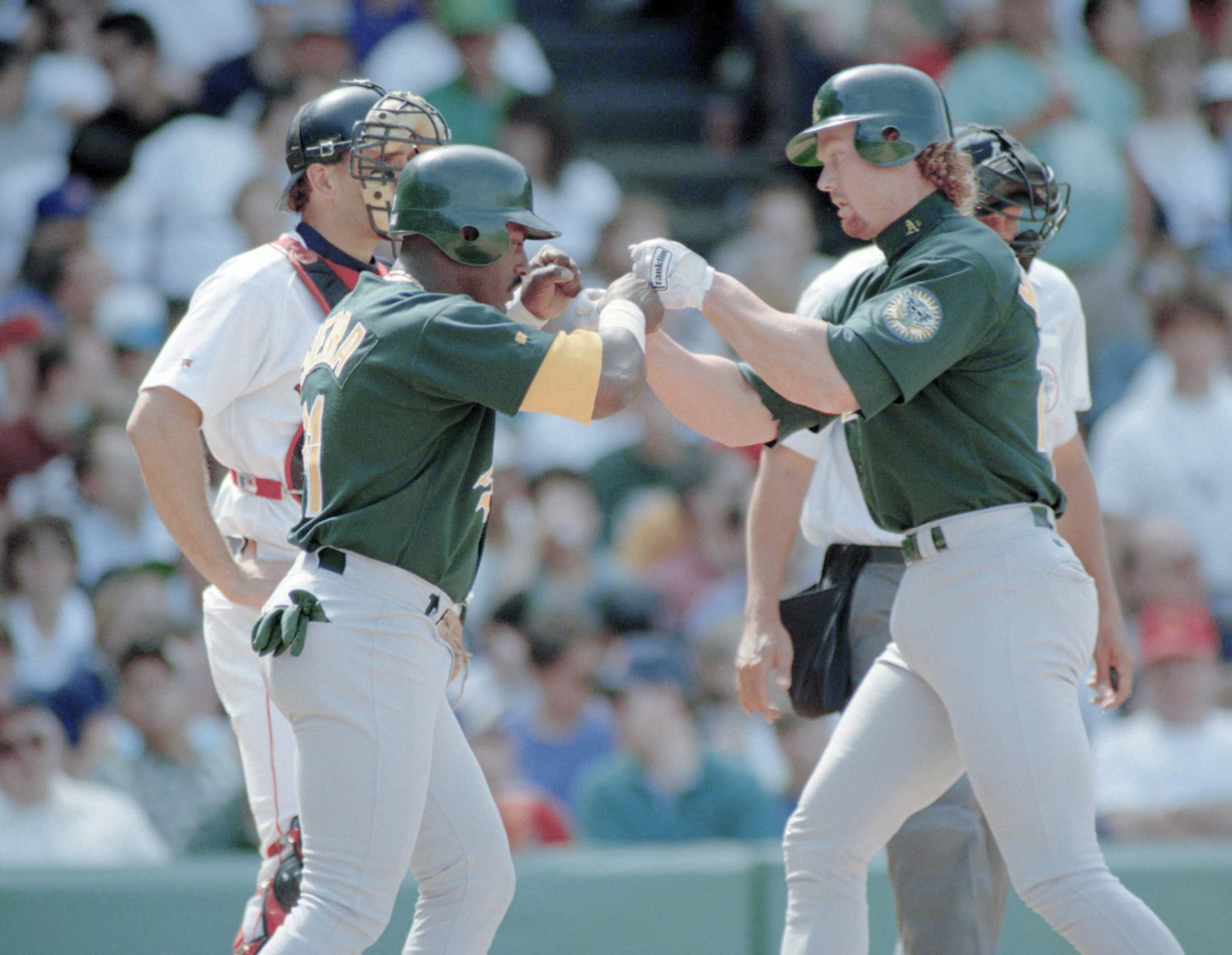
Both Players' Terms: 5 Years, $28 Million
In 2022 Dollars: $57 Million
Honorable Mention: Billy Butler's 3-Year, $30 Million Deal from 2014
Were These Good Ideas?
If anything, the real takeaway here is that the A's used to spend!
Otherwise, Mark McGwire was more deserving than Ruben Sierra. Whereas McGwire was MLB's leading home run hitter from 1987 to 1992, Sierra's own prowess as a power supply had taken a hit in recent years. He didn't even reach 20 homers in 1990 or 1992, the latter of which saw him hit just .278 with a .323 OBP besides.
Did They Work Out?
Not so much, though more so for McGwire than for Sierra.
Both players ended up getting traded before their contracts ran out, with Sierra going to the Yankees in 1995 and McGwire famously landing in St. Louis in 1997. But the latter at least gave the A's some good power (125 homers in 339 games) after losing much of 1993 and 1994 to injuries, while the former concluded his A's tenure with a pedestrian 100 OPS+.
Philadelphia Phillies: Bryce Harper
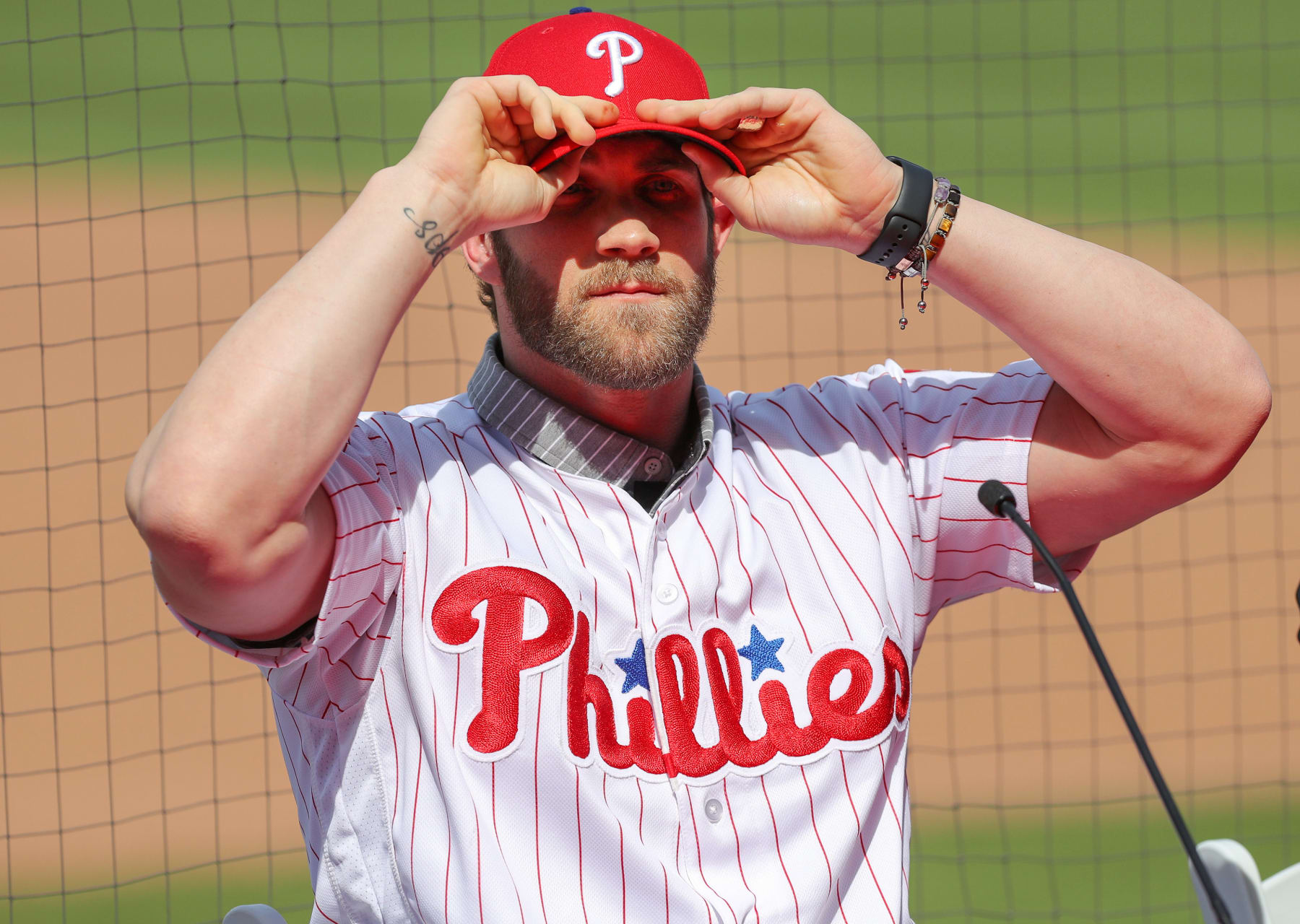
Signing Year: 2019
The Terms: 13 Years, $330 Million
In 2022 Dollars: $379.9 Million
Was It a Good Idea?
Some would say no, and not without good reason.
Though Bryce Harper was already a six-time All-Star and an MVP by the time he entered free agency, the true height of his ceiling was debatable. His MVP-winning campaign in 2015 was an all-timer for a 22-year-old, but his output on either side of it was more good than great. It didn't help, of course, that he'd had his share of injuries over the years.
Is It Working Out?
Uh, ya think?
Harper has been consistently excellent in four seasons with the Phillies, as he won his second NL MVP in 2021 and has hit to a well-above-average 150 OPS+. He also reminded everyone this year that he's a good guy to have in October. He clubbed six home runs, including the one that put the Phillies in their first World Series in 13 years.
Pittsburgh Pirates: Francisco Liriano

Signing Year: 2014
The Terms: 3 Years, $39 Million
In 2022 Dollars: $48.4 Million
Was It a Good Idea?
Whatever.
As in, this isn't about Francisco Liriano. He earned his payday by pitching to a 112 ERA+ across 2013 and 2014. The real story here is that such a small contract could represent the pinnacle of the Pirates' signing history. They've spent $305.6 million in free agency since 1991, or less than 10 players are earning on their own right now. That's pathetic.
Did It Work Out?
Again, not the point.
Pirates fans deserve better. Because while there is something to be said about how Pittsburgh is a small market, so is San Diego, and that hasn't stopped the Padres from spending like gangbusters after their ownership changed hands. What the Pirates have is not a market problem, but a Bob Nutting problem.
San Diego Padres: Manny Machado
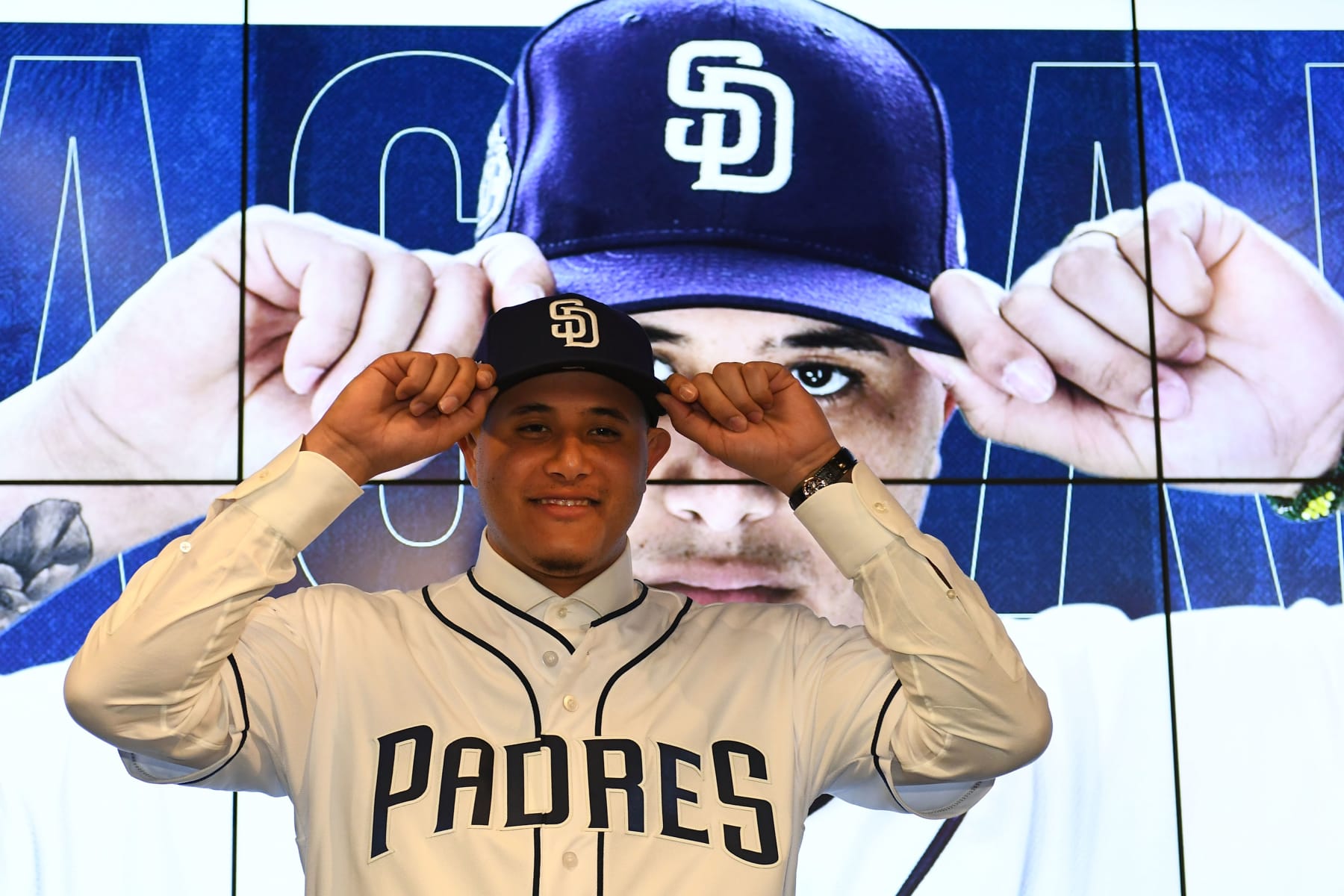
Signing Year: 2019
The Terms: 10 Years, $300 Million
In 2022 Dollars: $345.4 Million
Was it a Good Idea?
It was a no-brainer from some angles, but less so from others.
That Manny Machado was a talented player at the time was beyond dispute. An average season for him from 2015 to 2018 consisted of 36 home runs and 6.2 rWAR. But he also came with baggage, including a reputation as a dirty player. That a team that had just lost 96 games would take a chance on a player like this was...questionable, to say the least.
Is It Working Out?
Better than even the Padres might have anticipated.
Machado has continued to be outstanding on the field, accounting for a 136 OPS+ and a 162-game average of 5.2 rWAR. Yet it's perhaps just as important that he's matured into a leader in the clubhouse. It thus largely traces back to him that San Diego has made the playoffs twice in the last three years after going 0-for-13 from 2007 to 2019.
San Francisco Giants: Carlos Correa

Signing Year: 2022
The Terms: 13 Years, $350 Million
In 2022 Dollars: $350 Million
Is It a Good Idea?
Even adjusting for inflation, Carlos Correa's contract is worth about twice as much as the Giants' previous record payout for Barry Zito.
Lest anyone take this as a bad omen, one of these things is not like the other. Zito got $126 million in 2006 because Scott Boras tricked the Giants into thinking he was an ace despite a 110 ERA+ over his previous three seasons. As we covered on the Twins slide, Correa is legitimately one of the best position players in the sport. To boot, he's only 28.
Will It Work Out?
Seattle Mariners: Robinson Canó
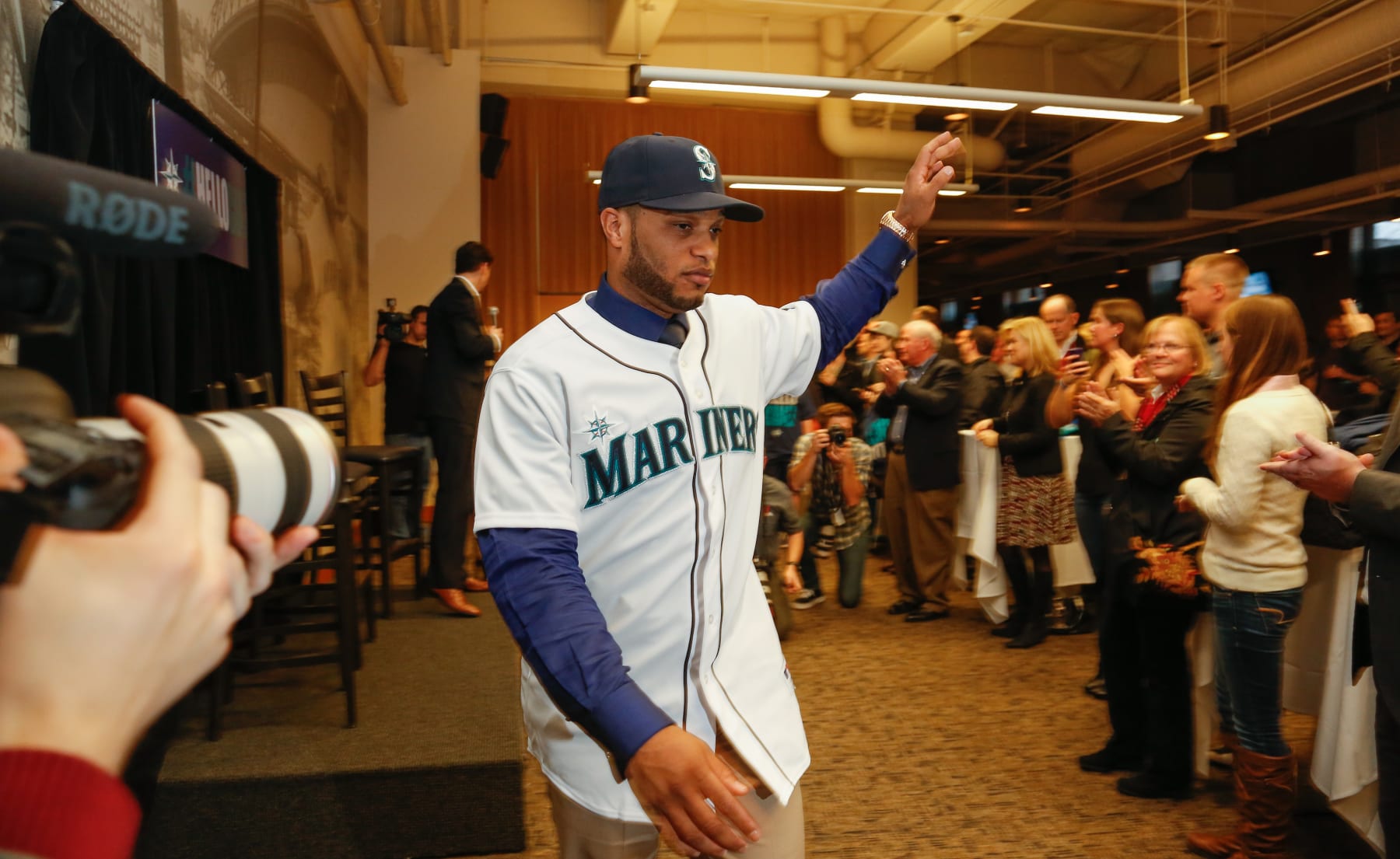
Signing Year: 2013
The Terms: 10 Years, $240 Million
In 2022 Dollars: $298.5 Million
Was It a Good Idea?
If not a brilliant idea.
After all, Robinson Canó was in the thick of his prime when the Mariners scooped him up. All he'd done over the previous five seasons was hit to a 138 OPS+ and post the second-most rWAR of any hitter. Though the Mariners were coming off a 91-loss season, a player like that figured to supercharge the offense in support of aces Félix Hernández and Hisashi Iwakuma.
Did It Work Out?
Not so much.
What's on paper suggests differently, as Canó posted a 129 OPS+ and with a peak of 39 home runs from 2014 to 2018. But his suspension for performance-enhancing drugs in '18 put a lasting hole in his reputation. And despite what everyone thought at the time, the trade that sent him to the Mets in Dec. 2018 has turned into an L for Seattle.
St. Louis Cardinals: Matt Holliday

Signing Year: 2010
The Terms: 7 Years, $120 Million
In 2022 Dollars: $162 Million
Was It a Good Idea?
It wasn't entirely without risk.
Matt Holliday had been an elite hitter with the Rockies from 2006 to 2008, but his first venture outside Coors Field in 2009 yielded mixed results. Though those included a 169 OPS+ and 13 home runs with the Cardinals after he headed over from Oakland in July, that was over a small 63-game sample that arguably didn't justify the biggest deal in Cardinals history.
Did It Work Out?
Risk? What risk?
Even if he started breaking down toward the end, Holliday did nothing but hit throughout the life of his contract. Not just in the regular season, where he had a 136 OPS+ and averaged 20 home runs per year, but in the postseason as well. Notably, he hit .294 and got on base at a .419 clip during the Cardinals' championship run in 2011.
Tampa Bay Rays: Wilson Álvarez
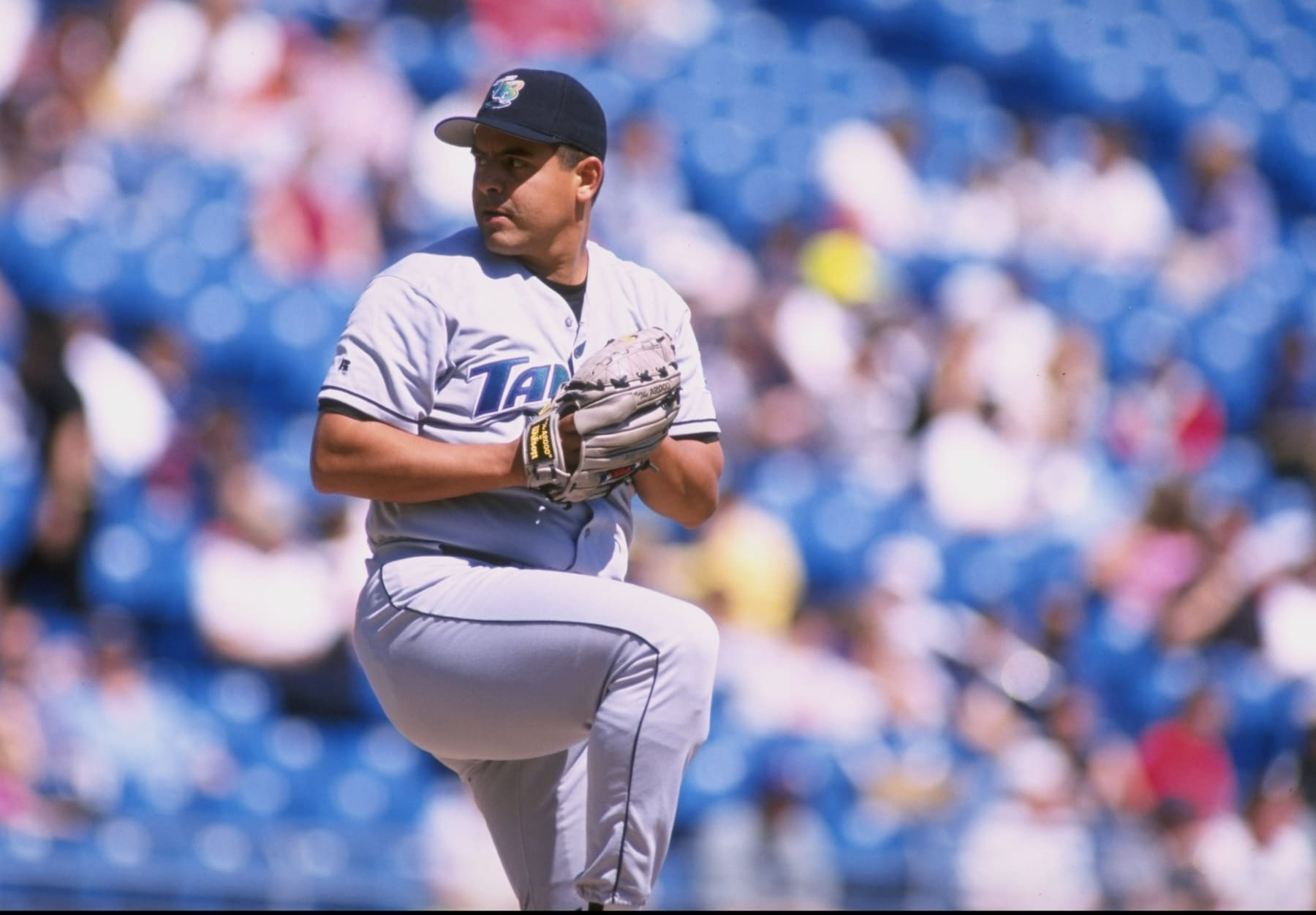
Signing Year: 1997
The Terms: 5 Years, $35 Million
In 2022 Dollars: $63.2 Million
Honorable Mention: Zach Eflin's 3-Year, $40 Million Deal from 2022
Was It a Good Idea?
That depends on how much you remember about Wilson Álvarez.
Though he's easily the most obscure player on this list, in his heyday he was...actually really good. An average season for him from 1993 to 1997 included 195 innings and a 122 ERA+. He was thus a good choice to be the first guy to lead the newly formed Rays' pitching staff, which he referred to as a "new challenge."
Did It Work Out?
It was a disaster from the start.
Quite literally, as Álvarez was rocked for six runs in his first outing as a Ray. He recovered well enough to pitch to a 109 ERA+ across 1998 and 1999, but then shoulder surgery sidelined him for all of 2000 and 2001. Upon his return in 2002, he was relegated to swingman duty and pitched to a 5.28 ERA.
Texas Rangers: Alex Rodriguez

Signing Year: 2000
The Terms: 10 Years, $252 Million
In 2022 Dollars: $418.9 Million
Honorable Mention: Corey Seager's 10-Year, $325 Million Deal from 2021
Was It a Good Idea?
The contract wasn't the problem.
Even in 2000 dollars, $252 million might have been an underpay for Alex Rodriguez. He was only coming off his age-24 season, with his five most recent campaigns accounting for a .315 average, 184 homers, 126 steals and an average of 7.7 rWAR. But rather than another hitter, the Rangers badly needed arms after ranking last in the AL in ERA in 2000.
Did It Work Out?
A-Rod's end of the deal sure did.
Starting with a truly amazing 2001 campaign, he averaged 52 home runs in his three seasons with the Rangers. Yet it was no great surprise that all three saw the Rangers finish in last place in the AL West. They had the right idea to get out from under his contract while they could in 2004, even if they missed a chance to acquire Robinson Canó in the act.
Toronto Blue Jays: George Springer
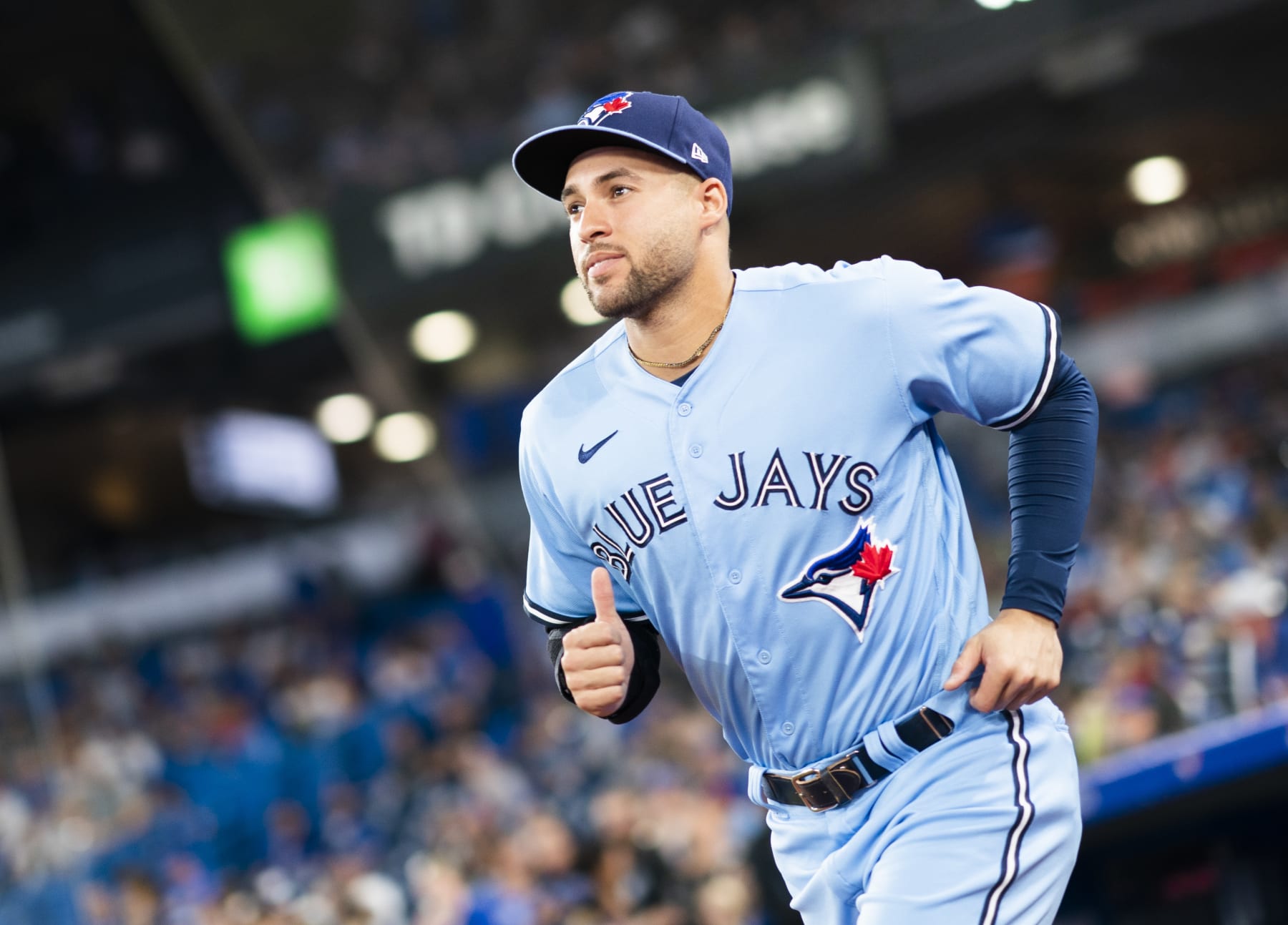
Signing Year: 2021
The Terms: 6 Years, $150 Million
In 2022 Dollars: $163 Million
Was It a Good Idea?
On paper, fits don't get much more perfect than this one.
Following a brief three-year rebuilding phase, the Blue Jays broke out and made the playoffs on the strength of a young, talented roster in 2020. They were nonetheless weak in center field, ranking third from the bottom in the AL for rWAR at the position. Enter George Springer, who had hit 174 home runs (plus 19 more in October) from 2014 to 2020.
Is It Working Out?
It hasn't all been smooth sailing, but yes.
The injury bug has been Springer's biggest challenge in his two years with the Blue Jays, as he played in 78 games in 2021 and 133 this past season. Yet he's been terrific when he's been out there, racking up a 135 OPS+ with 47 home runs. He's also a key piece of the team's fun-loving personality, notably in helping to introduce the "The Blue Jacket."
Washington Nationals: Stephen Strasburg

Signing Year: 2019
The Terms: 7 Years, $245 Million
In 2022 Dollars: $278.7 Million
Was It a Good Idea?
This one came from the heart, not the head.
The 2019 season was Stephen Strasburg's 10th with the Nationals, and by far the most triumphant one. He won 18 games in the regular season and then spearheaded their World Series championship run with a 1.98 ERA in six outings. After a performance like that, one supposes it's easy to overlook red flags such as his age (31) and injury history.
Is It Working Out?
This may well prove to be the worst contract in MLB history.
Three years into it, Strasburg has made only eight appearances in which he's been lit up for 25 runs in 31.1 innings. He had surgery for thoracic outlet syndrome in 2021, only to return in 2022 and immediately experience more problems related to the surgery. Now that he's 34, it's hard to see how he'll ever be able to reclaim his former dominance.
Stats courtesy of Baseball Reference and FanGraphs.
